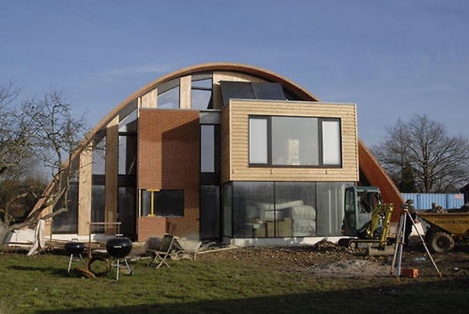The amount of energy required by zero carbon homes is next to nil, without compromising in providing the basic functions and daily needs for the occupants. It is the total measurement of all the greenhouse gas emitted indirectly or directly by activities practised at home like running an appliance or heating the home, personal activities like driving a car, wider services like air travel or public transportation and individual in-take of food and related products.
Carbon footprint of a home can be divided into two parts – primary footprint and secondary footprint. Primary footprint is the measurement of CO2 emissions that are generated directly from fossil fuels consumption. The secondary footprint on the other hand is the measurement of indirect emissions produced by manufacturing process inside a home and decomposition of products eventually. Examples include manufacturing of clothes, furnishings and cars, along with the recreational activities carried out by the inhabitants. Some of the factors which characterize zero carbon homes are described below.

Energy efficiency
Homes need to be more energy-efficient and in that, sufficient insulation needs to be installed in new homes, in addition to being ‘adequately airtight’. Gray water recycling, installing insulation of 180mm in thickness, insulating hot water heaters and replacing current appliances with the ones that show energy star rating of “A” could be some measures to consider.
Carbon compliance
Onsite zero carbon contribution includes zero carbon energy and low carbon usage like community heating network. ‘District Heating’ or community heating network is a system where heat gets distributed for commercial and residential water and the needs for space heating usually coming-in from a centralised location. This helps in dramatically reducing carbon footprint inside a home.
Allowable solutions
Approved measures of saving energy consist of near-site, off-site and on-site options. Near-site options are communal waste management, micro-hydro schemes and energy storage solutions, etc. Off-site options that can be considered include investing in plants that convert waste into energy, investing in low carbon cooling and investing in the renovation of low carbon technologies. On-site options are installing smart appliances, using grid-injected bio-methane and installing site based heat storage.
Alternative solutions include developing substitute projects like solar, hydro, wind-power and reforestation. These projects are termed as “Carbon Offsetting”, simply due to the fact that they either specialise in utilising carbon dioxide from atmosphere or prevent the usage of fossil fuels, thereby offsetting carbon amount that gets released by traditional fuel burning methods.
A large number of government agencies and private entities are joining hands these days to promote zero carbon footprints and zero carbon homes. Back in 2008, Zero Carbon Hub was founded in the UK to make it a common practise in building zero carbon homes within the country. This organisation is working together with both the government and the private sector so as to reach the goals set up under the Kyoto Protocol back in 1997 by the EU.

COMMENTS